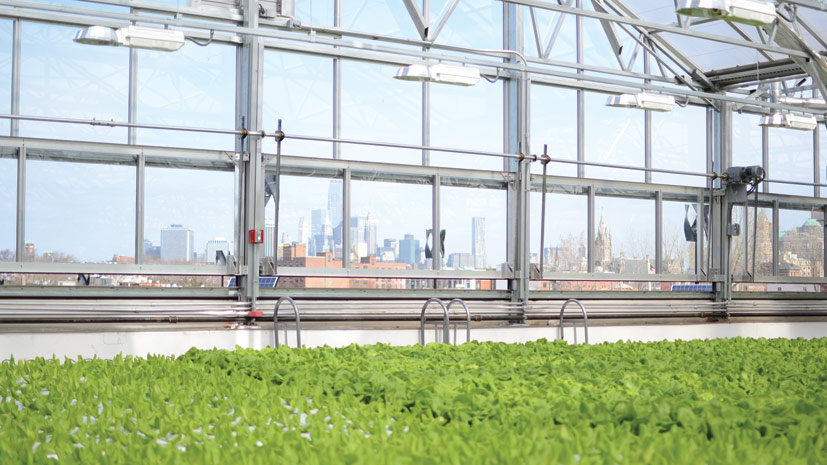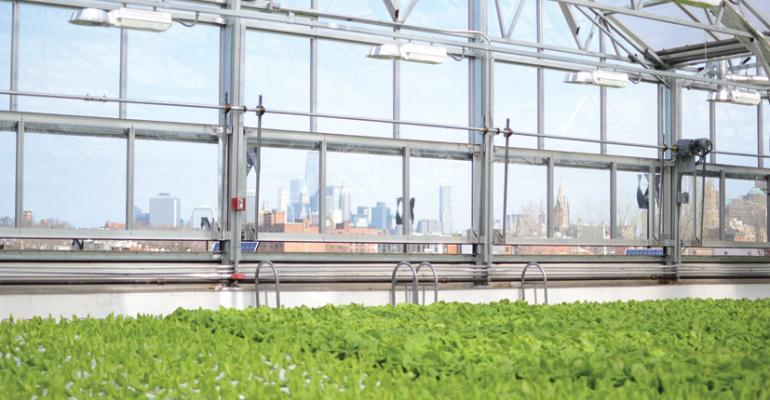Most retailers receive produce by truck, but Whole Foods Market can now receive it by elevator.
The greenhouse that sits on the top of Whole Foods’ Brooklyn, N.Y., store recently started harvesting from its crop of lettuces, leafy greens, herbs and seven types of tomatoes.
This is the second rooftop hydroponic farm run by Brooklyn-based Gotham Greens, and the grower’s first to be built on top of a retailer. Gotham Greens leases the space from Whole Foods.

“The industry leader in urban farming, Gotham Greens has been a valued local supplier of high quality, flavorful and fresh produce to Whole Foods Market since 2011, making this greenhouse partnership a natural and extremely exciting next step in our relationship,” said J’aime Mitchell, green mission specialist for Whole Foods’ Northeast Region, in a media statement.
Although the Austin, Texas-based retailer had already been sourcing products from Gotham Greens’ other Brooklyn farm, the proximity of the new farm brings a new meaning to local, with the grower delivering to Whole Foods three or four times a week.
“This greenhouse is 20,000 square feet, which is about a half of an acre, but our yields are equivalent to a nine-acre farm. So it’s actually very, very productive,” Viraj Puri, co-founder of Gotham Greens, told SN.
Thanks to the climate-controlled facility, kept from 65 to 75 degrees, Whole Foods will be able to receive product year-round. Gotham Greens expects to grow 150 tons of produce annually at the new farm, and will also supply some restaurants.
Greenhouse technology
The 20 full-time employees that maintain the crops benefit from the greenhouse technology.
“We’ve got sensors located all over the greenhouse. They are tracking temperature, humidity, light levels, CO2, oxygen, and all that information is fed to a computer control system, which is automated which helps maintain the climate of the greenhouse,” Puri said.
The farm’s hydroponic setup also reuses water.
“We dissolve our organic nutrients in the water to provide nutrition for the crops. But then we actually collect all that irrigation water and then recycle it so it’s very water efficient,” said Puri.
The resulting fruits and vegetables are pesticide free, grown using Integrated Pest Management methods such as introducing insects that keep predatory insects out.
“It’s a hard program,” Puri said, noting that it can be expensive to maintain, but that the company is committed to providing customers with pesticide-free produce.
The use of bugs extends into the tomato partition of the greenhouse, where bees are housed to pollinate the plants.
Gotham Greens packages and stores the fruits and vegetables in two rooms adjacent to the greenhouse. The produce packaging explains that the food was grown locally, and Whole Foods promotes the products with in-store signs.
“We’re particularly excited to work with a local organization with roots right here in Brooklyn and a mission — local, fresh, sustainably produced food — that’s very much in line with our own,” said Whole Foods’ Mitchell.
| Suggested Categories | More from Supermarketnews |
 |
|

|
|




